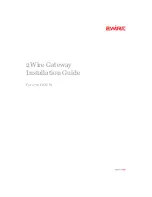
vice.
A three-way telephone call. Performance feature in T-Net, T-ISDN
and your PBX.
Thin Ethernet connection. Network connection for 10-mbps net-
works with BNC connector. T-connectors are used for the connec-
tion of equipment with BNC sockets.
Twisted pair connection, Fast Ethernet. Network connection for
100-mbps networks.
Twisted pair connection. Network connection for 10-mbps networks
with RJ45 connector.
D channel protocol used in the German ISDN. Today the more com-
mon protocol is DSS1.
See DES.
Specified data rates of 54, 48, 36, 24, 18, 12, 9 and 6 mbps and a
working frequency in the range of 5 GHz (for IEEE802.11a) or 2.4
GHz (for IEEE802.11g). IEEE802.11 g can be configured to run in
compliance with 11b or 11b and 11 as well.
One of the IEEE standards for wireless network hardware. Products
that meet the same IEEE standard can communicate with each oth-
er, even if they come from different hardware manufacturers. The
IEEE802.11b standard specifies the data rates of 1, 2, 5.5 and 11
mbps, a working frequency in the range of 2.4 to 2.4835 GHz and
WEP encryption. IEEE802.11 wireless networks are also known as
Wi-Fi networks.
The A-subscriber is the caller.
For connection of an analogue terminal. In the case of an ISDN ter-
minal (terminal adapter) with a/b interface, the connected analogue
terminal is able to use the supported T-ISDN performance features.
Authentication, Authorisation, Accounting
PIN or password
A rule that defines a set of packets that should or should not be
transmitted by the device.
An active component of a network consisting of wireless parts and
Funkwerk Enterprise Communications GmbH
Glossary
bintec R1xxx/R3xxx/R4xxx
509
















































